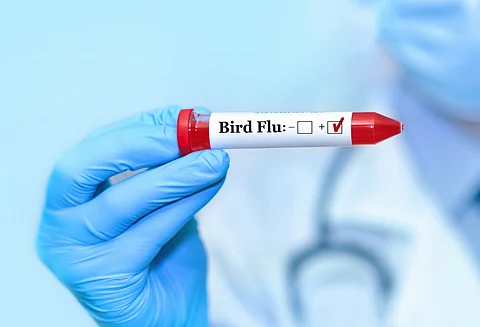

Days after a Canadian teenager was diagnosed with the H5N1 avian flu virus, the United States’ California reported another potential case of bird flu in a child on November 20, 2024.
According to the California Department of Public Health (CDPH), the child had mild respiratory symptoms, but officials assured the public that no human-to-human transmission has occurred in California or the US.
The source of the child’s infection remains unknown, as the child, from Alameda County, had no known contact with an infected animal. Officials noted that testing of the child’s sample indicated a low detection of the virus. Screening of close contacts revealed no avian flu infections among them.
In a statement, the CDPH said human infections with avian flu are rare and in sporadic cases where the virus has been detected, it has not spread beyond close contacts.
This case marks the second avian flu infection reported in a child in North America from an undetermined source.
California has also reported 27 confirmed cases of avian flu in humans since October this year, attributed to direct contact with infected dairy cows.
Because bird flu viruses can change and gain the ability to spread more easily between people, public health officials have provided preventive measures and are monitoring animal and human infections carefully
California Department of Public Health
To date, all infected individuals have experienced mild symptoms such as conjunctivitis and have not required hospitalisation. Other symptoms include eye discharge, cough, sore throat, vomiting, diarrhoea, runny nose, body aches, breathing difficulties, fever, headache and fatigue.
Earlier this month, the strain of H5N1 avian flu virus detected in a teenager in the Canadian province of British Columbia raised alarms among scientists. The virus exhibited adaptations that may make it easier to infect humans.
Researchers identified three significant genetic differences between the viruses of the H5N1 lineage found in poultry and waterfowl in the region and the virus infecting the teenager.
“Two possible mutations that could enhance the virus’s ability to infect human cells and another that could allow it to replicate more easily in human cells, not just in the cells of its usual avian host,” according to an article published in the journal Nature on November 20, 2024.
Scientists suggested the virus may have evolved within the infected person. While this adaptation improves its ability to infect humans, it does not necessarily indicate that the virus is capable of spreading between people.
“Being able to bind to human cell is a prerequisite to cause a pandemic,” said Scott Hensley, an immunologist at the University of Pennsylvania in Philadelphia. “However, this alone is often insufficient to trigger a pandemic.”
While concerning, Hensley emphasised that these findings should serve as a warning of the virus’s potential to rapidly evolve into a form that could cause severe disease.
Thus far, 53 people in the US have been infected with H5N1 avian flu contracted from cattle and poultry in 2024.